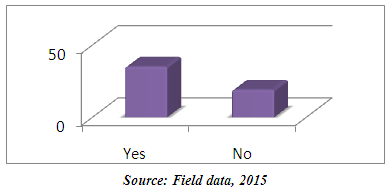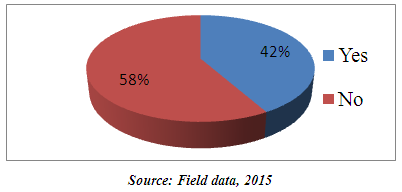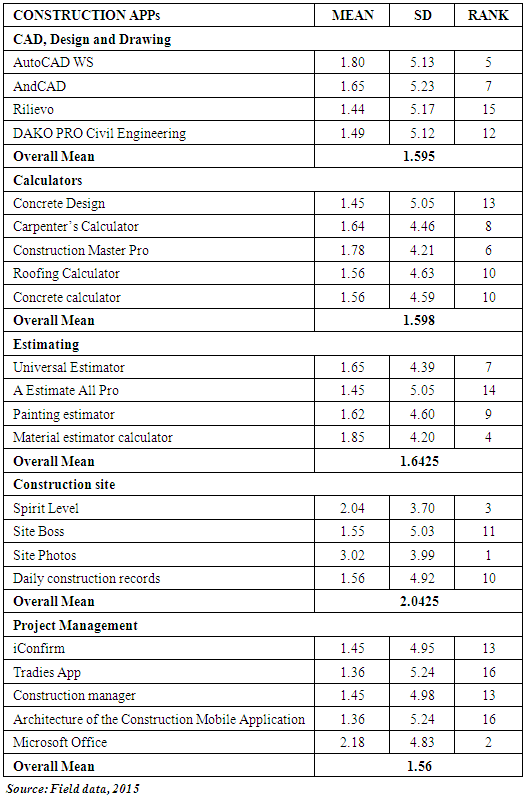-
Paper Information
- Paper Submission
-
Journal Information
- About This Journal
- Editorial Board
- Current Issue
- Archive
- Author Guidelines
- Contact Us
Science and Technology
p-ISSN: 2163-2669 e-ISSN: 2163-2677
2016; 6(1): 1-7
doi:10.5923/j.scit.20160601.01

Awareness and Utilization of Construction Related Smart Mobile Device Applications in the Construction Industry
Yankah Jonas Ekow1, Owiredu Gabriel Kofi2
1Department of Building Technology, School of Engineering, Cape Coast Polytechnic, Cape Coast, Ghana
2Department of Estate Management, Faculty of Built & Natural Environment, Kumasi Polytechnic, Kumasi, Ghana
Correspondence to: Yankah Jonas Ekow, Department of Building Technology, School of Engineering, Cape Coast Polytechnic, Cape Coast, Ghana.
| Email: |  |
Copyright © 2016 Scientific & Academic Publishing. All Rights Reserved.
This work is licensed under the Creative Commons Attribution International License (CC BY).
http://creativecommons.org/licenses/by/4.0/

Several construction related smart mobile device applications (Apps) that can be useful in the construction industry exists today, yet little to nothing is known about the levels of awareness and utilization of such Apps by construction management professionals in the construction industry of Ghana .There appears to be a gap between the existence of such technology design and utilization of such technology in the Ghanaian construction industry. The aim of this study is to examine the use of construction related Apps in the Ghanaian construction industry and to proffer measures to boost its utilization. The objectives were to ascertain the awareness of the existence of construction related Apps and to evaluate construction management professionals’ utilization of the Apps in the Ghanaian construction industry. After extensive search of extant literature, five (5) construction related smart mobile device applications were identified. The identified Apps were categorized under 5 main headings; namely, estimation, calculators, CAD, construction site and project management Apps. A questionnaire survey of Sixty-Two registered building and civil contractors in Ashanti Region were conducted. Questionnaires were distributed to top management team of the firms which yielded a response rate of 89%. Data obtained were analyzed using means scores and other descriptive statistics. The results show that majority of respondents were not aware of the existence or availability of the construction elated Apps, although about 58% of the respondents own and use Android mobile phones or tablets that supports such Apps. Findings further indicate that, the ten (10) top Apps normally used by construction management team members were site photos, microsoft, spirit level, material estimator calculator, AutoCAD WS, Construction Master Pro, Universal Estimator, AndCAD, Carpenter’s Calculator, and painting estimator. Construction related Apps may be useful technology to aid construction management professionals’ performance towards achieving production efficiency and improvement. It is however important that tertiary educational institutions pursuing construction related programmes educate construction engineers to have adequate knowledge of and to be abreast with modern construction related Apps and the importance of the usage of these construction Apps to enhance increased productivity, efficiency and improved performance in the conduct of their operations.
Keywords: Construction Apps, Contractors, Construction industry, Smart mobile devices, Ghana
Cite this paper: Yankah Jonas Ekow, Owiredu Gabriel Kofi, Awareness and Utilization of Construction Related Smart Mobile Device Applications in the Construction Industry, Science and Technology, Vol. 6 No. 1, 2016, pp. 1-7. doi: 10.5923/j.scit.20160601.01.
Article Outline
1. Introduction
- Today, industries such as manufacturing, production, service and others are becoming increasingly characterized by technology facilitated production. This is largely due to the quest for production efficiency particularly in industries where human factor components are great such as construction. The construction is a labour intensive industry that relies on many different construction trades/craftmen such as masons, carpenters, plumbers, steel benders, painters among many others and the use of many hand tools by the craftsmen just to execute one construction project. In such situation, human induced errors can have great impact of the efficiency of the construction processes. This is a major challenge for the construction management team members whose responsibility it is to ensure production efficiency. Technology facilitated aids such as construction related Apps, therefore, may be an appropriate means to enhance construction management teams’ performance in enhancing and improving production efficiency.Productivity and efficiency improvement is one of the main goals of the construction industry ([1]; [5]) although it is still a challenge in the construction industry due to the large human factor input and the use of hand tools in construction. The industry is constantly looking for means and methods to improve the efficiency and productivity at the jobsites [6]. The integration of smart or android mobile tools and technologies such as the use of phones, tablets among others into construction operations management can help enhance the jobsite efficiency, quality, and productivity [5]. It is usually acknowledged that a gap exists between technology design and technology use, with the result that users generally need to adapt technology once it has been acquired and in practice of which the Ghanaian construction industry is of no exception ([8]; [14]). Advancement in the technologies of smart devices and mobile computing provide unprecedented opportunities to innovate the existing management and production in construction. After invading the consumer market, nowadays smart phones and tablets are quickly becoming common and natural extensions of industrial networks too. Several attempts have been made in utilization of various mobile computing devices also on construction project management; rugged construction tablets have been around for a decade or more ([9]; [16]).These smart devices such as tablet and smart phones have some winning features that allow them to impose on other types of mobile hardware: they are light, compact, relatively cheap, high performing and very user friendly. In particular, user friendliness and pervasiveness makes the construction processes and management applications usable not only by experts but rather by any person because it requires no special training whatsoever to safely and successfully operate the system [16]. Mobile technologies are expected to initiate the next wave of technological development, which will transform the construction industry to the next level of technological advancement ([3]; [4]; [13]; [15]). In the United States and other developed or developing countries, the adoption of this technological change is driven by companies who look to their younger, newer employees to drive the adoption of technological change such as this because they are assumed to be familiar with the latest technological innovations available in the construction industry [7]. Past research has concentrated mainly on usefulness of the mobile Apps particularly the extent of what the Apps can do and their limitations. Considering knowledge about the Apps and use of the Apps by the construction professionals, literature is almost silent on the details of construction Apps awareness and utilization by construction management team members. Consequently, there exist an incomplete picture of the level of awareness and utilization of construction related smart mobile device Apps in the construction industry of Ghana.Against this background, the purpose of this research is to answer the research questions: “What is the level of awareness and utilization of construction related Apps among construction management team members”? More specifically, this research has two objectives:(1) To examine the awareness level of construction Apps in the construction industry.(2) To evaluate the construction Apps used in the Ghanaian construction industry.The rest of the article is structured as follows: First, the extant literatures on construction Apps are reviewed. This is followed by a description of the research methods and procedures used in the study. The results of the enquiry are then discussed. Finally, implications, limitations, and direction for future research are offered.
2. Conceptual Developments
2.1. Construction Apps
- Since the introduction of Apple’s Apps store and Google’s Android Market (now [18]) around the late 2008, there has been a number of application which downloads exceed 102 billion of which the construction industry is of no exception. Sources such as ([12]; [10]; [11]; [5], [18]) gave the examples of Apps used in the construction industry among others. Table 2 provides a summary of the Apps usable in the construction industry.
 | Table 1. Apps examples and uses |
3. Research Methodology
3.1. Sampling
- The population for this study comprised both the registered members of the Ashanti Region branch of Association of Building and Civil Contractors of Ghana (ABCCG) and other non-registered members of construction firms that operate in the Ashanti region. There were Forty-One (41) members of contractors in good standing with (ABCCG) who had also registered with the Ministry of Water Resources, Works and Housing. The researcher engaged with the ABCCG registered firms and accesses their networks to signpost additional participants. This continued until no new firms could be sign post. The process resulted in additional twenty-one (21) non-members of the Building and Civil contractors in Ashanti Region who have duly registered with Ministry of Water Resources, Works and Housing. The two groups gave a total population of Sixty-Two (62) firms and that was used for the study.The building and civil contractors’ in-house top management team who were; project managers, quantity surveyors, architects, and general foreman were the unit of analysis of the study. The top management of these firms was selected because most of such professionals have been exposed to construction projects, and they are also involved in various project phases including planning, design, and construction. A total of four questionnaires were delivered to each of the 62 firms. In each of the firms the four questionnaires were distributed among the four categories of construction professionals indicated earlier. Out of a total of 248 questionnaires distributed over the 62 construction firms, 55 firms responded giving 220 fully completed usable questionnaires. The response rate for the study was therefore 88.7%.
3.2. Data Collection
- A questionnaire survey was conducted to elicit responses from the professionals in the firms. To improve the questionnaire in terms of clarity and relevance, a pilot study of ten firms was conducted. Feedback from the pilot survey was incorporated to fine-tune the questionnaire. Data for the main study was collected over a three month-period during March to June 2015. Before conducting the survey, each firm manager’s permission was obtained. Personal administration of the questionnaires was done by the researcher. The questionnaires were sent directly to individual professionals indicated in the various firms.The questionnaire that was used was structured in three main areas. It comprised of the respondent’s background, the level of awareness of the construction Apps and the frequency of usage of construction applications.
3.3. Measures
- Respondents indicated the frequency of usage of construction related Apps using a five-point Likert scale from always to never. The 5-point scale used was 5- always, 4- very often, 3- sometimes, 2- rarely, 1- never. The data obtained were analyzed using the descriptive statistics.
3.4. Demographic Variables
- The questionnaire also contained questions to determine a respondent’s level of education, years of experience, ownership of smart mobile device and usage of such devices.
4. Findings
4.1. Demographic Profile of Respondents
4.1.1. Respondents' Professional Category
- Out of the 55 construction firms surveyed, all the top management personnel of the building and civil contactors responded. The representatives were project managers, quantity surveyors, architects, and general foremen. All the respondents had some years of work experience. Between11-15 years working experience was the highest with32% of the responses obtained. This shows that respondents had more experience in the field of study. It is followed with 0-5 years and 6-10 years representing 29% and 25% respectively of the total responses obtained. The category with the least of the responses was the 16 years and above respondents, which had 14% of the total responses.
4.1.2. Educational Background
- All the respondents have had some form of education with majority haven had tertiary level education. This is important to determine the awareness and use of the construction related Apps in the construction industry. BSc holders dominated the population with 48.18%. This is followed by 27.27% that had Higher National Diploma (HND) and Master of Science degree (MSc.) holders with 8.18%. The least of 1.36% of respondents had Senior High School education. Obviously, all respondents have had some form of education including Senior High School (SHS), Technician Certificate, Higher National Diploma (HND) Certificate, Bachlor of Science(BSc.) Certificate and Master of Science (MSc.) Certificate with percentages of each in the total respondents as 1.36%, 15.00%, 27.27%, 48.18% and 8.18% respectively. The constituent of the 55 Project Managers were 12 MSc holders, 37 BSc holders and 6 HND holders. Also, out of the 55 Architects 1 holds MSc, 53 holds BSc and 1 Holds HND. Among the Quantity Surveyors, 5 respondents had MSc, 16 had BSc, 29 had HND and five technicians. The General Foremen was made up of 24 HND holders, 28 technicians and 3 SHS holders (Table 2).
 | Table 2. Educational background of respondents |
4.2. Ownership of Android Phones/Tablets
- Majority of the respondents (65%) had android phones or tablets for their operation. These respondents had phones or tablets that support construction Apps. Only 35% of the respondents do not use android phones or tablets (Figure 1).
 | Figure 1. Ownership of Android phones or tablets |
4.3. Awareness Level and Utilization of Construction Related Apps
- Unsurprisingly, majority of the respondents own android phone or tablets yet majority (58%) of participant were not aware and have not used the construction applications before. Also, 42% of the respondents were aware and have used construction Apps in their operations (Figure 2).
 | Figure 2. Awareness and utilization of construction related Apps |
4.4. Construction Apps Usage
- The descriptive statistics about of the survey on the type of construction related Apps and their utilization are given in Table 3. Upon analysis, a trend emerged that is very discouraging.
|
5. Discussions
- A lot of construction applications are available for use in the construction industry today. This study has examined the levels of awareness and utilization of the construction Applications by construction professionals in the Ghanaian construction industry. To the author’s knowledge, it is the first study that reveals the utilization of construction related application in Ghanaian construction industry. The research contributes to construction management literature by demonstrating the importance of construction application usage in improving efficiency and productivity at construction projects.
5.1. Summary of Findings
- From the study, construction Applications has still not been fully utilized in Ghanaian construction industry. Majority of the respondents own android phones and tablets that support construction Apps yet it is the minority of the respondents that were aware and have used construction Apps in their operations. This is evidenced by the fact that 48% of the respondents have used construction Apps at one time or another. The topmost ten (10) Apps used by the top management team of the building contractors were Site Photos, Microsoft, Spirit Level, Material estimator calculator, AutoCAD WS, Construction Master Pro, Universal Estimator, AndCAD, Carpenter’s Calculator, and painting estimator. However, these Apps were grouped into five as identified, namely; estimation, calculators, CAD designs, construction site and project management Apps.In terms of CAD Design and Drawings, AutoCAD WS was the mostly used Apps by professionals for drawings. Construction Master Pro was the most often used calculators for checking materials used in buildings. Material estimator calculator was had the highest mean rating among the Estimators Apps. Spirit Level and Site Phones were both highest among the construction site Apps used. Microsoft Apps was the highest Apps used in project management Apps category for their operations.The overall indication of the study is that the levels of awareness of the construction related Apps by construction management team members is nowhere near appreciable levels. Regarding utilization of the construction related Apps, the situation could be described at worst as ‘never’ used and at best as ‘rarely’ or ‘sometimes’ used.
5.2. Managerial Implications
- Management of construction companies should try and set some budgetary allocation for the purchase of current Android phones or tablets with construction apps to be used at both offices and construction sites. This will promote the use of technology aided production improvement strategies to enhance production efficiency. Educational and other training institutions pursuing construction and engineering related programmes should integrate construction related Apps in their educational curriculum to ensure that construction professionals receive education that makes them abreast with construction related Apps and the benefits of the usage of these construction Apps to enhance efficiency in their operations. It should also be made part of the curriculum for training of construction professionals.
5.3. Limitations and Directions for Future Research
- Some limitations of the study might be related to the data collection and interpretation of results. The study was limited to construction firms that are operating in the Kumasi Metropolis of Ghana, however, construction activities in Ghana are skewed towards the capital city [2].The result may therefore be an incomplete picture of the situation.The current research was limited to the level of awareness and the utilization of construction applications on smart mobile devices in improving efficiency and site productivity. Future research should examine other potential factors that might influence construction application utilization in the Ghanaian construction industry. In particular, the effect of perceived usefulness and perceived ease of use of construction related applications on construction professional’s intentions to use such applications offer fruitful avenues for future research. Further, studies that will compare the levels of accuracy of measurements obtained using smart mobile devices and the conventional construction tools will improve its acceptance and utilization by construction professionals. Technology Acceptance Model (TAM) can also be used to examine the subject further to bring the factors that are causing the low utilization of construction Apps in the construction industry of Ghana.
ACKNOWLEDGEMENTS
- The author acknowledges the effort of Mr Adjei Kofi Owusu, Senior lecturer at the Department of Building Technology, Faculty of Built & Natural Environment of Kumasi Polytechnic, P.O. Box 854 Kumasi-Ghana, for the immeasurable role he played in the preparation of this paper. This paper would have been impossible without his ideas which formed the basis of the paper and his supervision, contributions and diligent review of the paper that improved its quality tremendously.
 Abstract
Abstract Reference
Reference Full-Text PDF
Full-Text PDF Full-text HTML
Full-text HTML